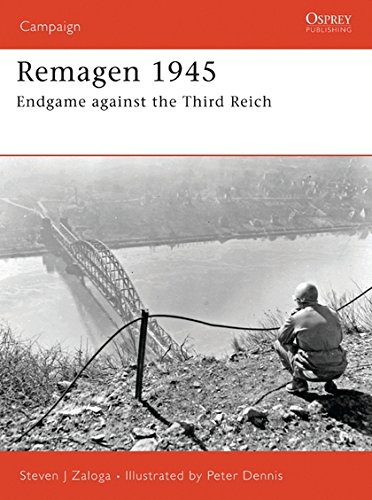

Most ebook files are in PDF format, so you can easily read them using various software such as Foxit Reader or directly on the Google Chrome browser.
Some ebook files are released by publishers in other formats such as .awz, .mobi, .epub, .fb2, etc. You may need to install specific software to read these formats on mobile/PC, such as Calibre.
Please read the tutorial at this link: https://ebookbell.com/faq
We offer FREE conversion to the popular formats you request; however, this may take some time. Therefore, right after payment, please email us, and we will try to provide the service as quickly as possible.
For some exceptional file formats or broken links (if any), please refrain from opening any disputes. Instead, email us first, and we will try to assist within a maximum of 6 hours.
EbookBell Team

4.1
10 reviewsFollowing the Battle of the Bulge in the Ardennes, the Allies began steps for the final assault into Germany. The long-delayed US Army thrust over the Roer River, Operation Lumberjack, finally took place in February, placing the US Army along the Rhine. The Rhine represented the last major geographical barrier to the Allied advance into Germany. The plan was for Montgomery's 21st Army Group to leap the Rhine into the Ruhr in a carefully choreographed attack called Operation Plunder. In the event, fortune smiled on the US Army when the 9th Armored unexpectedly found that the Ludendorff bridge at Remagen had not yet been demolished by the Wehrmacht, leaving this one major crossing over the Rhine intact. An armored infantry team supported by the new Pershing tanks stormed the bridge, seized it in fierce fighting and disarmed the charges placed on it. They then held it against numerous counterattacks in which the Germans used conventional tactics and unconventional, including jet bombers, V-2 missiles, and frogmen.
Remagen was not the only impromptu Rhine crossing made by the US Army in central Germany but it was the most dramatic and hardest fought. The irrepressible George Patton, in spite of instructions to stay put, snuck an infantry division across the Rhine in the south, setting the stage for the race into Germany. After reinforcing their two major Rhine crossings, the US Army launched its late-March offensive, encircling Frankfurt, and setting the stage for the defeat of the Wehrmacht in the West. This is a gripping, authoritative account of a crucial battle during the last major set-piece operation of World War II (1939-1945).